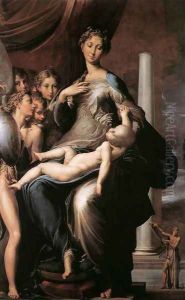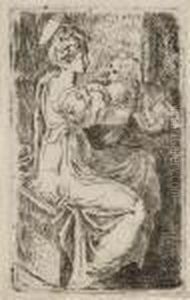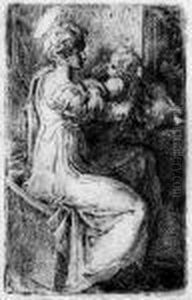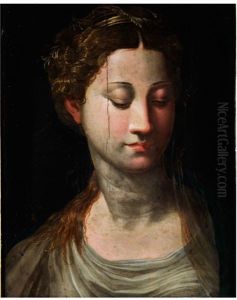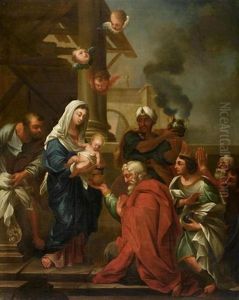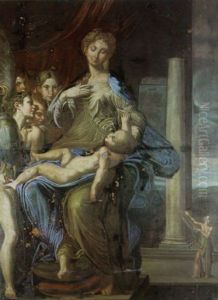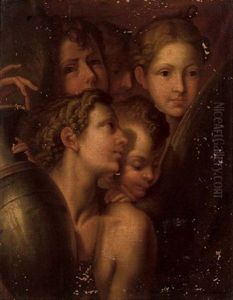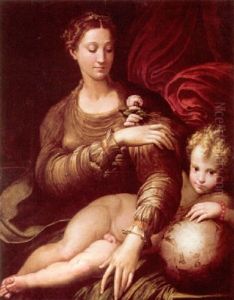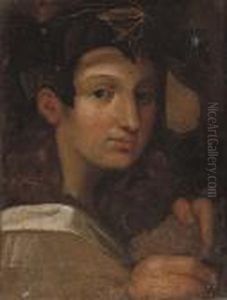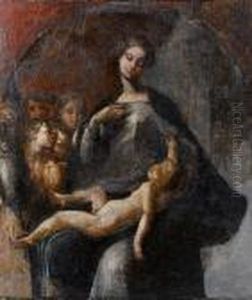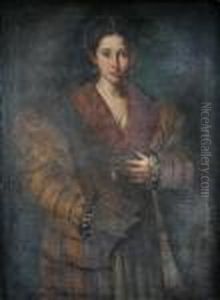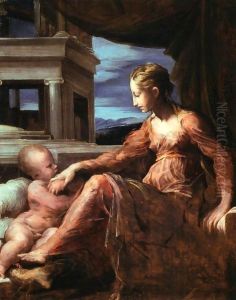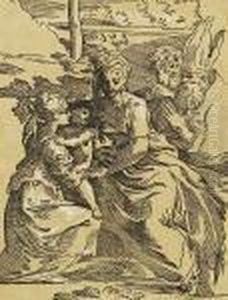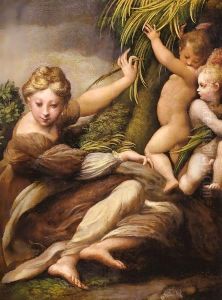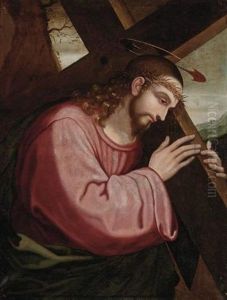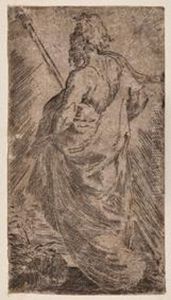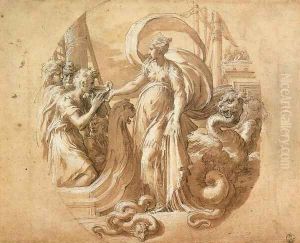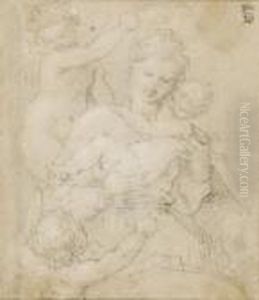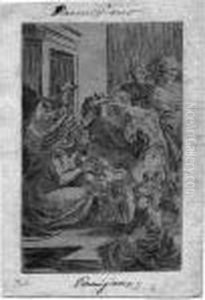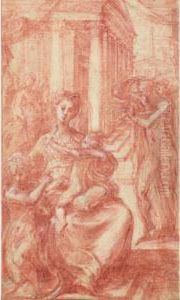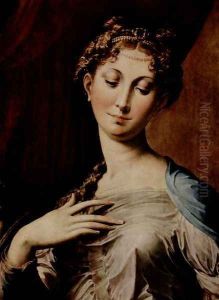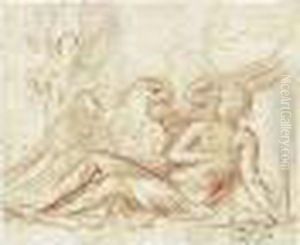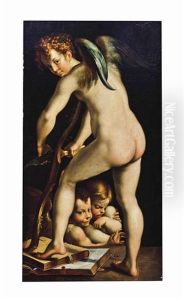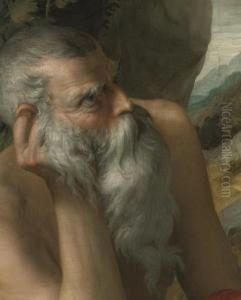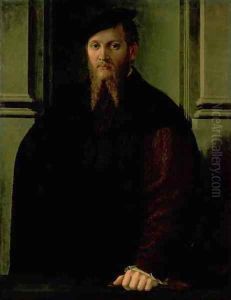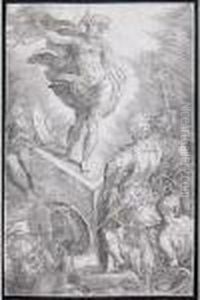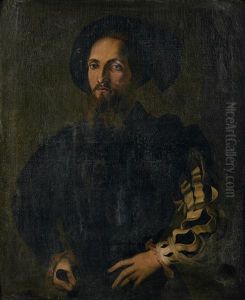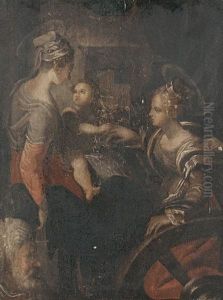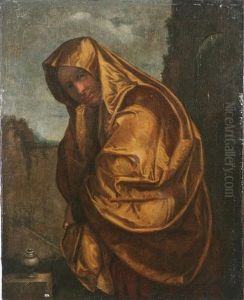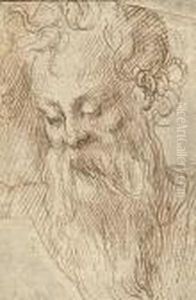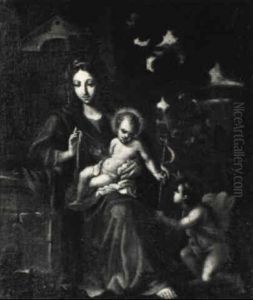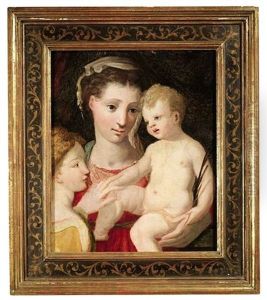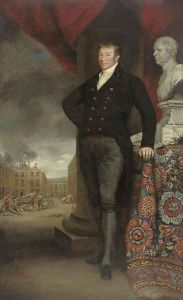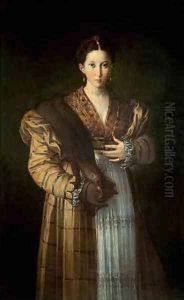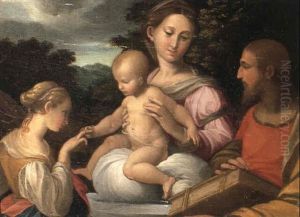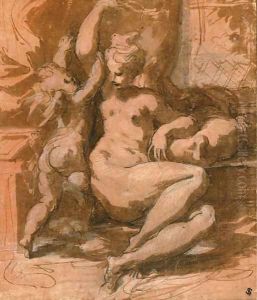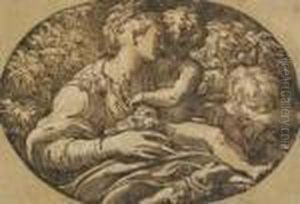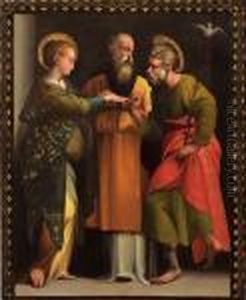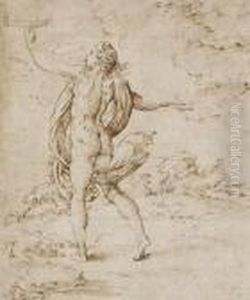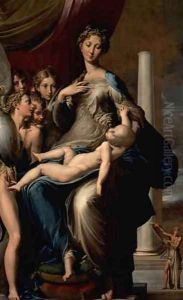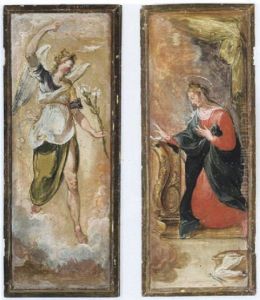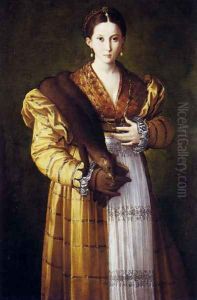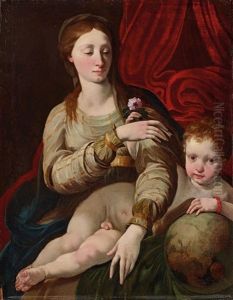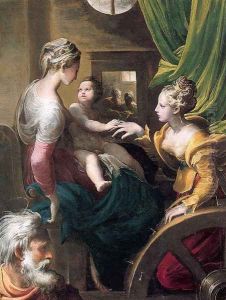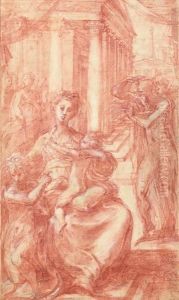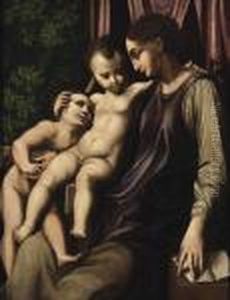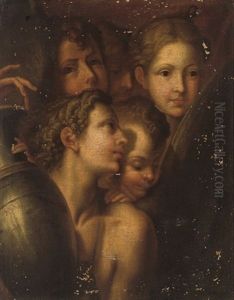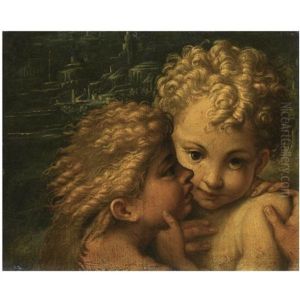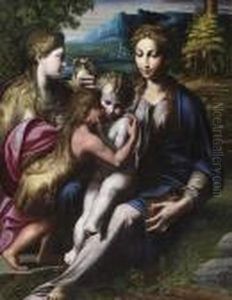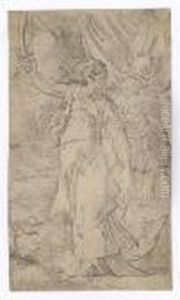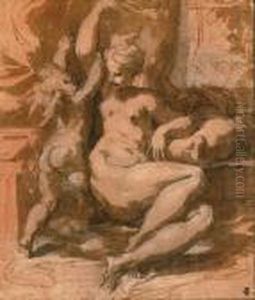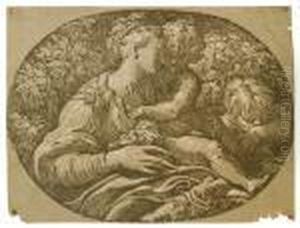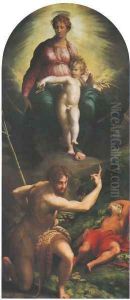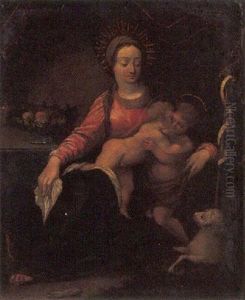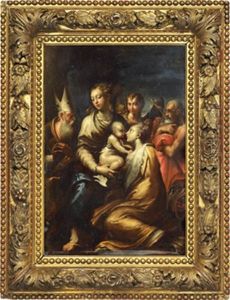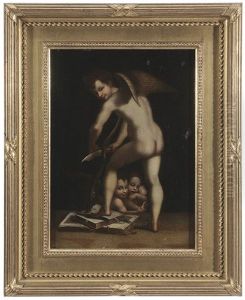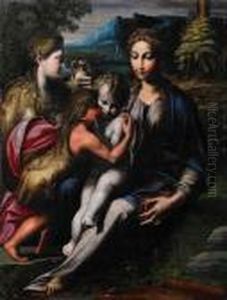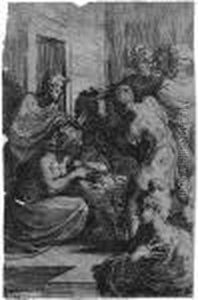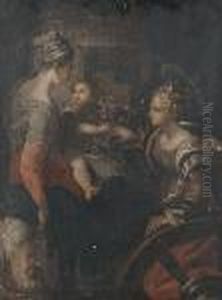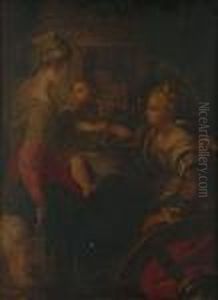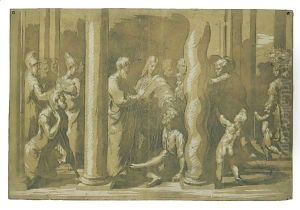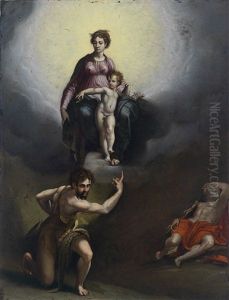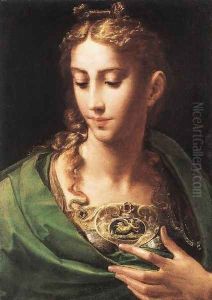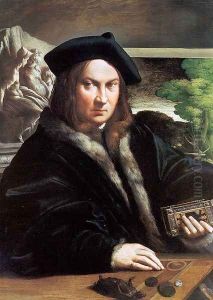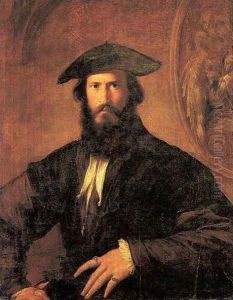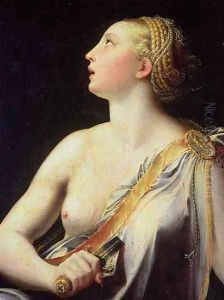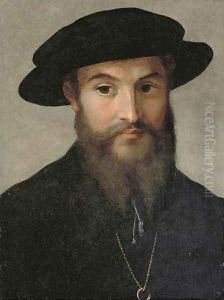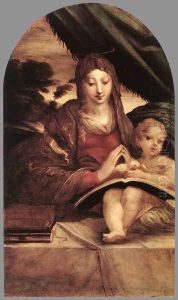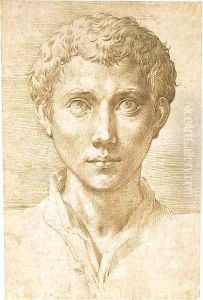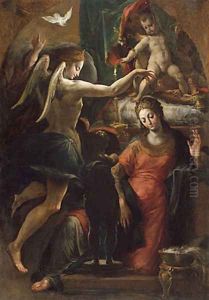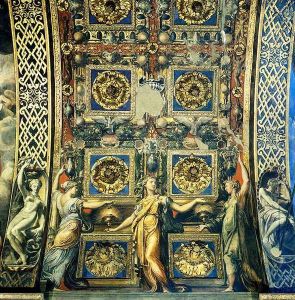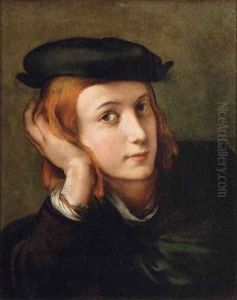Girolamo Francesco Maria Mazzola (Parmigianino) Paintings
Girolamo Francesco Maria Mazzola, better known as Parmigianino, or the 'little one from Parma', was an Italian Mannerist painter and printmaker active during the Renaissance period. He was born in Parma, Italy, in 1503 into a family with artistic interests. His father, Filippo Mazzola, was also a painter, though not as widely recognized as his son would become.
Parmigianino was a prodigious talent from a young age; he was apprenticed to his uncles, Michele and Pier Ilario Mazzola, who were both painters, and his work was characterized by a precocious skill that drew considerable attention. By the age of 16, he had already produced significant works, and his career was marked by a series of masterpieces that displayed his unique style characterized by elongated figures and an ethereal, graceful elegance.
In 1524, he traveled to Rome, where he was influenced by the works of Raphael and other High Renaissance artists. However, his stay in Rome was cut short by the Sack of Rome in 1527, during which he was imprisoned. After his release, he returned to Northern Italy, spending time in Bologna before eventually returning to Parma.
Parmigianino's works are often noted for their sophisticated and refined technique, as well as for an otherworldly quality that seems to transcend the naturalism of his predecessors. One of his most famous works is the 'Madonna with the Long Neck' (1534-1540), which exemplifies the Mannerist style with its unusual proportions and a sense of elegant distortion.
Despite his artistic success, Parmigianino's personal life was fraught with difficulties. He was known to be eccentric and had financial troubles that plagued his career. He was also deeply interested in alchemy, which distracted him from his painting and may have contributed to his financial instability.
Parmigianino died in 1540 at the age of 37 in Casalmaggiore, near Parma. His early death contributed to the aura of the 'tragic artist', but despite his short life, his work had a significant impact on the development of Mannerism in Northern Italy and influenced many later artists. Parmigianino's legacy includes not only his paintings but also his drawings and etchings, which are highly valued for their beauty and technical skill.
